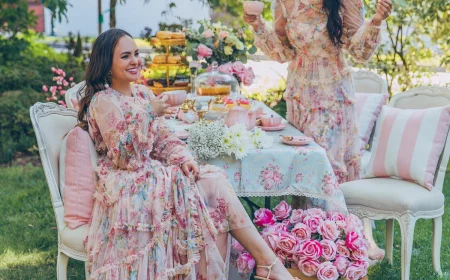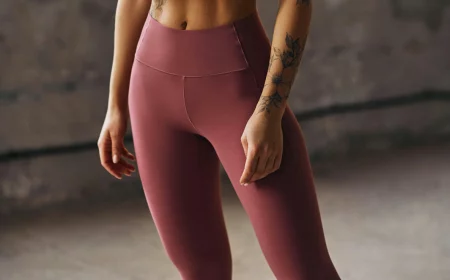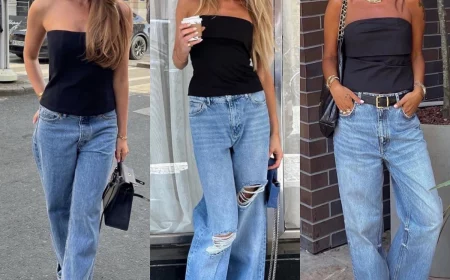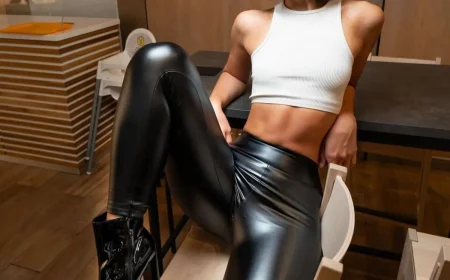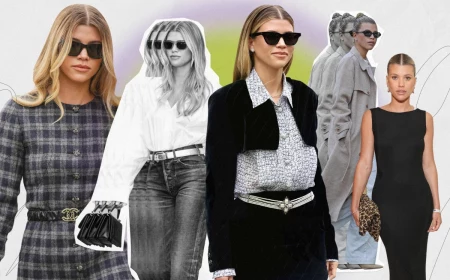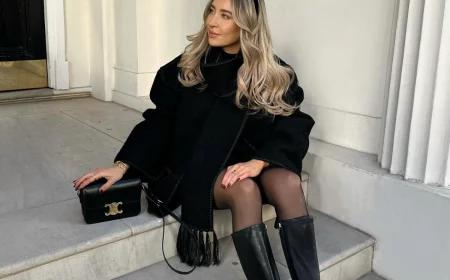Beyond the Moodboard: A Practical Guide to Building a Dark Academia Wardrobe That Lasts
My love for fashion didn’t come from glossy magazines. It was forged in the dusty backrooms of theaters and the quiet, temperature-controlled aisles of textile archives. For years, my job was all about costumes—sourcing them, restoring them, and creating them from scratch. I had to make clothes that told a character’s story before a single line was spoken. That world taught me the language of fabric and the power of a perfect cut.
In this article
So when I see a style like Dark Academia, I see something more than a fleeting internet trend. It’s a return to appreciating clothes with substance, history, and a real sense of purpose. It’s about the satisfying weight of a real wool coat on a chilly day, the reliability of a sturdy leather satchel, and the sheer comfort of a sweater that’s been truly lived in.
Lots of people are drawn to the moody, intellectual vibe, but building a wardrobe that feels truly authentic is about understanding the why behind the clothes. This isn’t about playing dress-up. It’s about building a functional, timeless wardrobe. So let’s get practical. We’ll go beyond the aesthetic and focus on the stuff that really matters: the fabrics, the fit, and the construction that make this style so enduring.
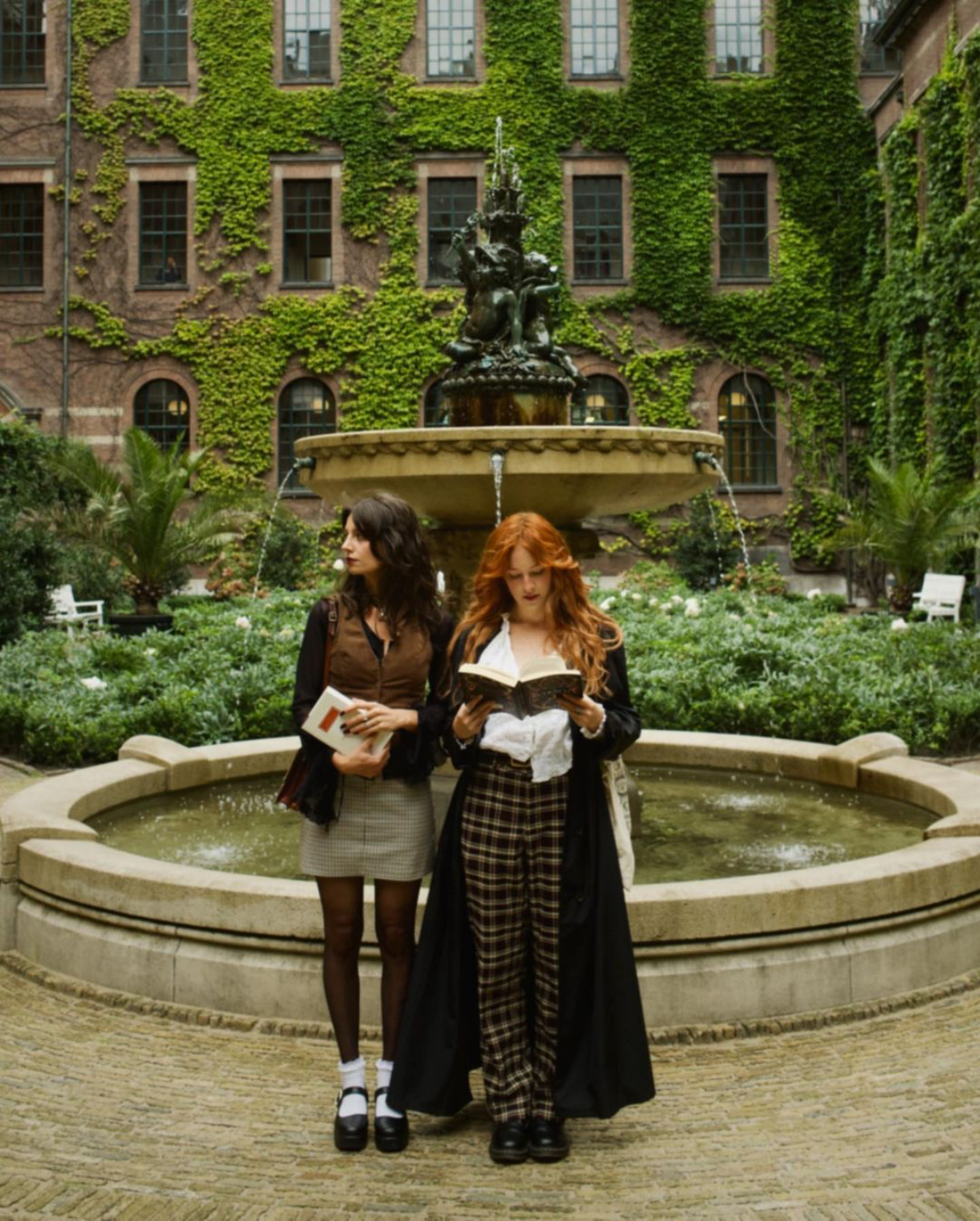
First Things First: Understanding the Materials
The entire Dark Academia look is built on a foundation of natural, hardworking fabrics. These are the kinds of textiles that were standard for everyday wear in cooler climates, long before polyester took over the world. Honestly, getting to know these materials is the most important step you can take.
Wool: The Undisputed King
Wool is the absolute cornerstone of this style, and for good reason. It’s an amazing insulator (it even keeps you warm when it’s damp), it’s incredibly durable, and it naturally resists wrinkles. Whenever I’m thrifting, the first thing I do is check the material tag. A high wool content is a huge green flag for quality.
- Tweed: This isn’t just one fabric; it’s a whole category of rugged woolen cloth. It’s typically woven in a twill or herringbone pattern. The most famous variety, Harris Tweed, is a gold standard—it feels rough, substantial, and has a satisfying heft that modern poly-blends just can’t replicate.
- Flannel: Unlike tweed, wool flannel is brushed to create a soft, fuzzy surface (called a ‘nap’) that traps air for extra warmth. This makes it a fantastic choice for trousers or a cozy overshirt. It just drapes beautifully.
- Knitwear: For sweaters, you want to look for merino, lambswool, or Shetland wool. Merino is the softest, making it great for turtlenecks that sit against your skin. Lambswool is a bit sturdier and perfect for a classic crewneck. Shetland is the most rugged and warm, ideal for those chunky Aran or fisherman-style sweaters.
Heads up! Some people find wool itchy. If that’s you, don’t despair. Look for fine-gauge merino wool, which is much less likely to irritate your skin. A great trick is to always wear a thin cotton long-sleeve or button-down shirt as a barrier between your skin and a chunkier wool sweater. It works like a charm.
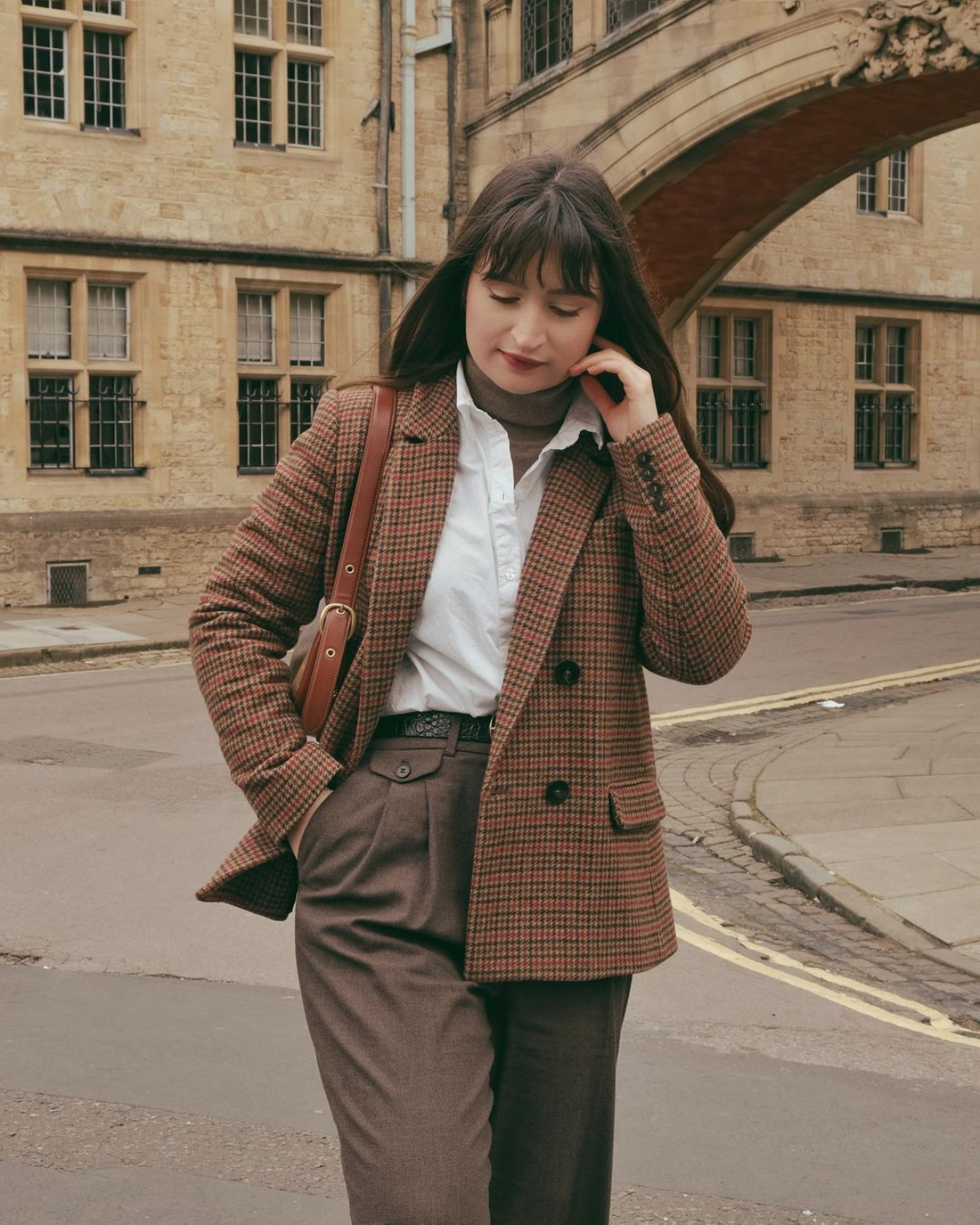
Cotton: The Workhorse Base Layer
Cotton is what you wear under all that wool. It’s breathable, easy to care for, and feels great. But not all cotton is created equal.
- Oxford Cloth: The classic material for a button-down shirt. It’s a basket-weave fabric that’s both durable and a little bit textured. The best part? It gets softer and more comfortable with every wash.
- Corduroy: This is a cotton fabric with those distinct raised cords, or “wales.” Thinner wales (pinwale) are perfect for shirts, while the thicker, wide-wales are what you want for durable trousers and jackets. Pro tip when thrifting: run your hand over it. High-quality corduroy feels dense and velvety.
- Twill and Chino: These are the sturdy cotton weaves used for trousers, giving off a classic American collegiate vibe. A good pair of chinos is maybe one of the most versatile things you can own.
By the way, here’s a little challenge for you. Next time you’re at a thrift store, find a 100% wool sweater and an acrylic one. Close your eyes and just feel them. You don’t even have to buy anything. Just train your hands to recognize the difference. It’s a skill that will serve you well.
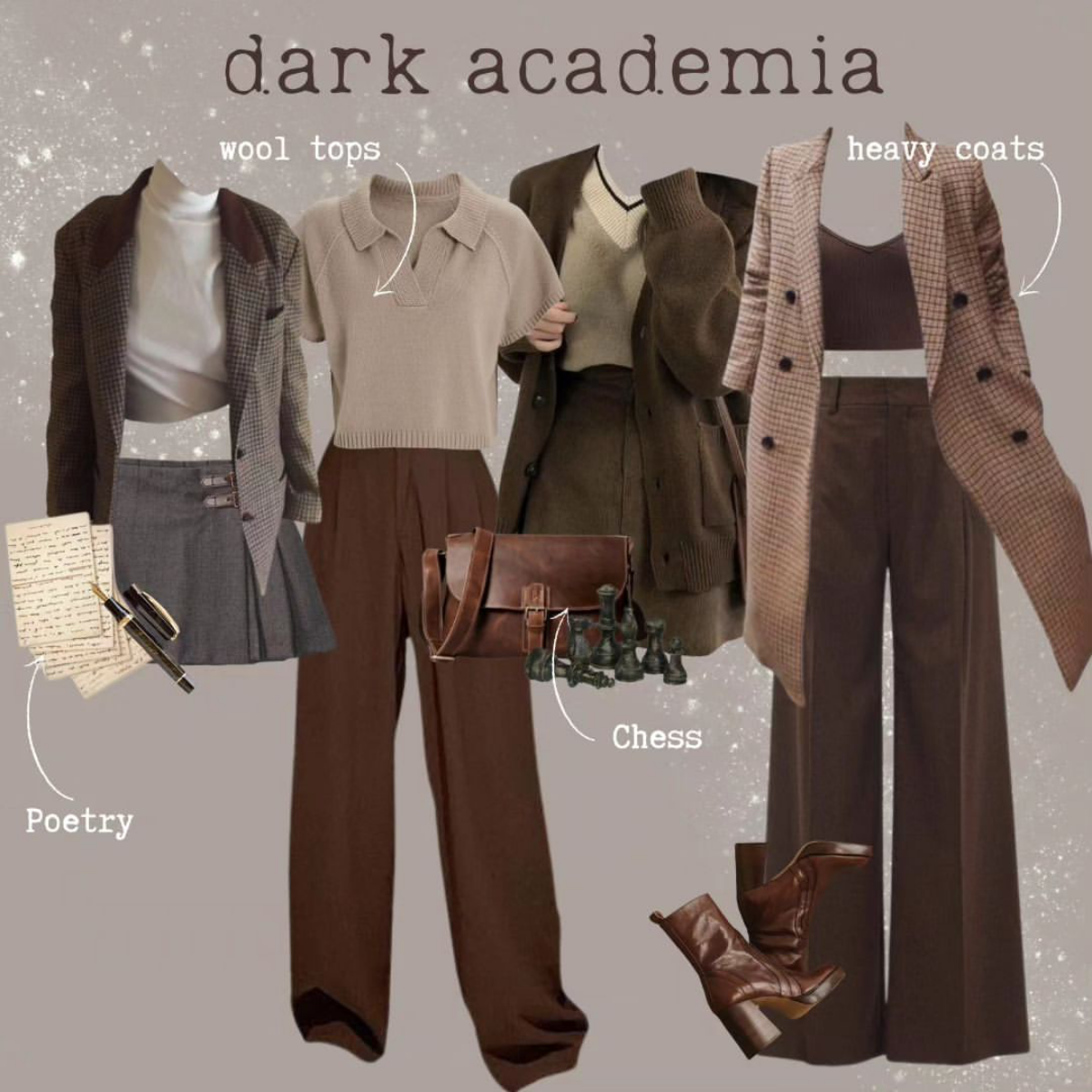
How to Actually Build Your Wardrobe
I learned in my costuming days that a great wardrobe is built, not bought in a single shopping spree. It’s a slow, thoughtful process of curation. The goal is a collection where almost everything can be mixed and matched.
The Secret Weapon: A Good Tailor
If you take away only one piece of advice from this guide, let it be this: tailoring is everything. A perfectly fitting garment looks more expensive and feels a million times better to wear. The Dark Academia silhouette is structured and sharp, not baggy and sloppy.
Here’s what I look for, especially in a blazer or coat:
- The Shoulders Don’t Lie: The shoulder seam of a jacket MUST sit right on the edge of your shoulder bone. This is the most difficult and expensive part of a jacket to alter, so get this right from the start. Too wide, and you look like a kid in your dad’s clothes. Too narrow, and it will pull and look tight.
- Check the Waist and Length: Trousers should sit at your natural waist, and the hem should have a clean, slight break over your shoes—not puddling around your ankles. Blazer sleeves should end right at your wrist bone, allowing about a half-inch of your shirt cuff to peek out. It’s a small detail that makes a world of difference.
Seriously, this is the best money you can spend on your clothes. Getting trousers hemmed is usually pretty affordable, maybe $15 to $25. Having the waist of a blazer taken in might cost between $30 and $60. Shoulder adjustments are the most complex and can easily run $75 or more, which is why it’s so important to buy a jacket that fits you in the shoulders off the rack. My strategy? Buy a high-quality, second-hand piece for cheap, then invest a little in getting it tailored. A $30 vintage wool blazer that’s been fitted to your body will always look better than a $300 one straight from the store.
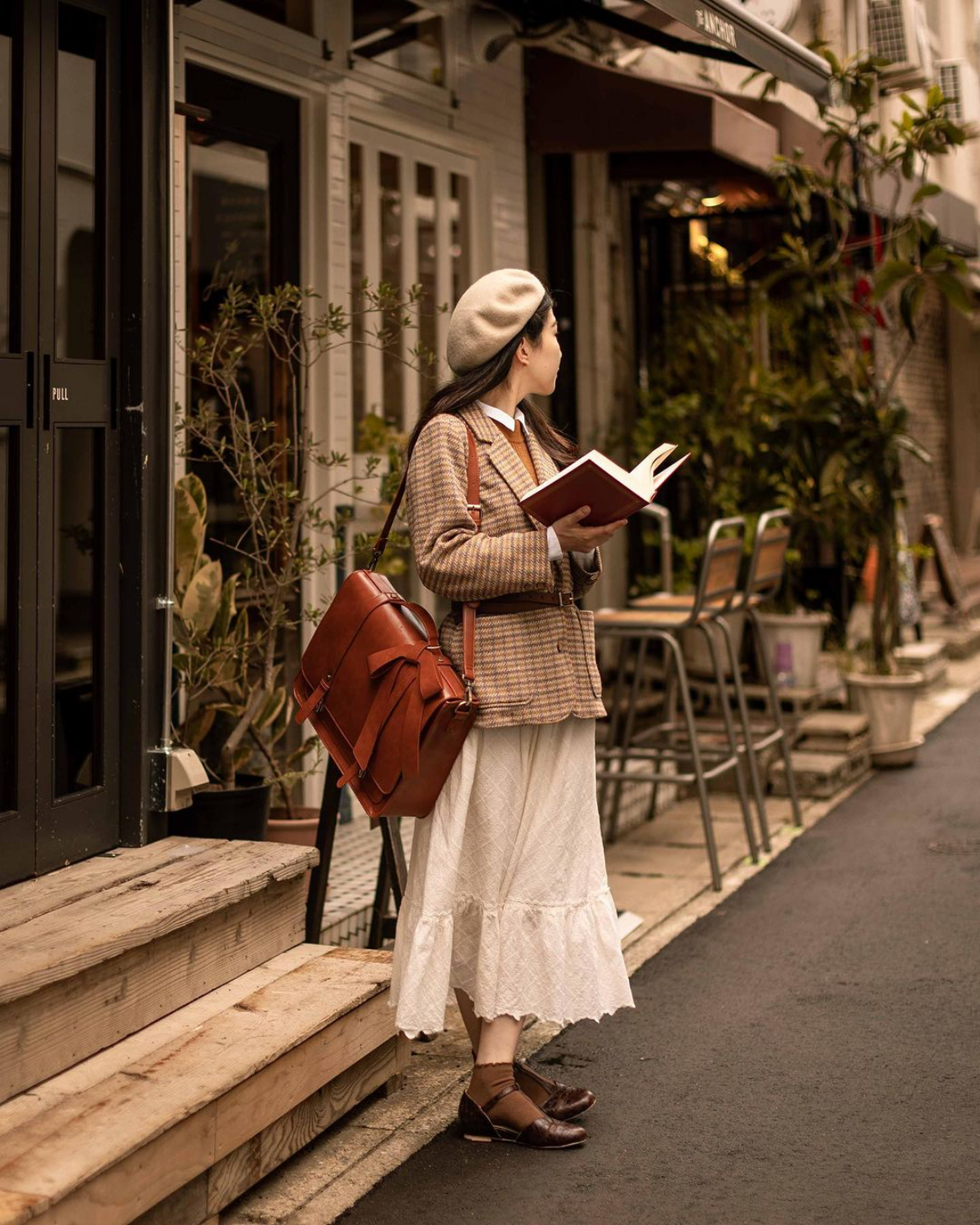
Sourcing Your Pieces: The Smart Shopper’s Guide
Thrifting is, without a doubt, the most authentic and budget-friendly way to build this wardrobe. Older garments were just made better. Here’s how I tackle a thrift store:
- Go to the Men’s Section First: Honestly, this is where you’ll find the best stuff. For blazers, sweaters, and trousers, the men’s section almost always has better quality materials (think 100% wool) and more classic cuts. Don’t worry about the tag—focus on the fabric and the fit. A men’s Small blazer can be a perfect oversized or regular fit for a women’s Medium or Large. Just know your shoulder-to-shoulder measurement before you go!
- Shop Online Smartly: Thrifting on sites like eBay or Poshmark is a great option, but you need a strategy. Use very specific search terms like “vintage wool blazer,” “Harris Tweed 40R,” or “corduroy trousers 32×30.” And the golden rule: ALWAYS check the listed measurements against your own. Never, ever trust the tag size alone, as vintage sizing is all over the place.
- Brands to Hunt For: Keep an eye out for classic, durable brands. For vintage finds, look for names like Pendleton, L.L. Bean, Brooks Brothers, or J. Press. For newer basics like t-shirts or socks, you can’t go wrong waiting for seasonal sales at places like J.Crew or Uniqlo.
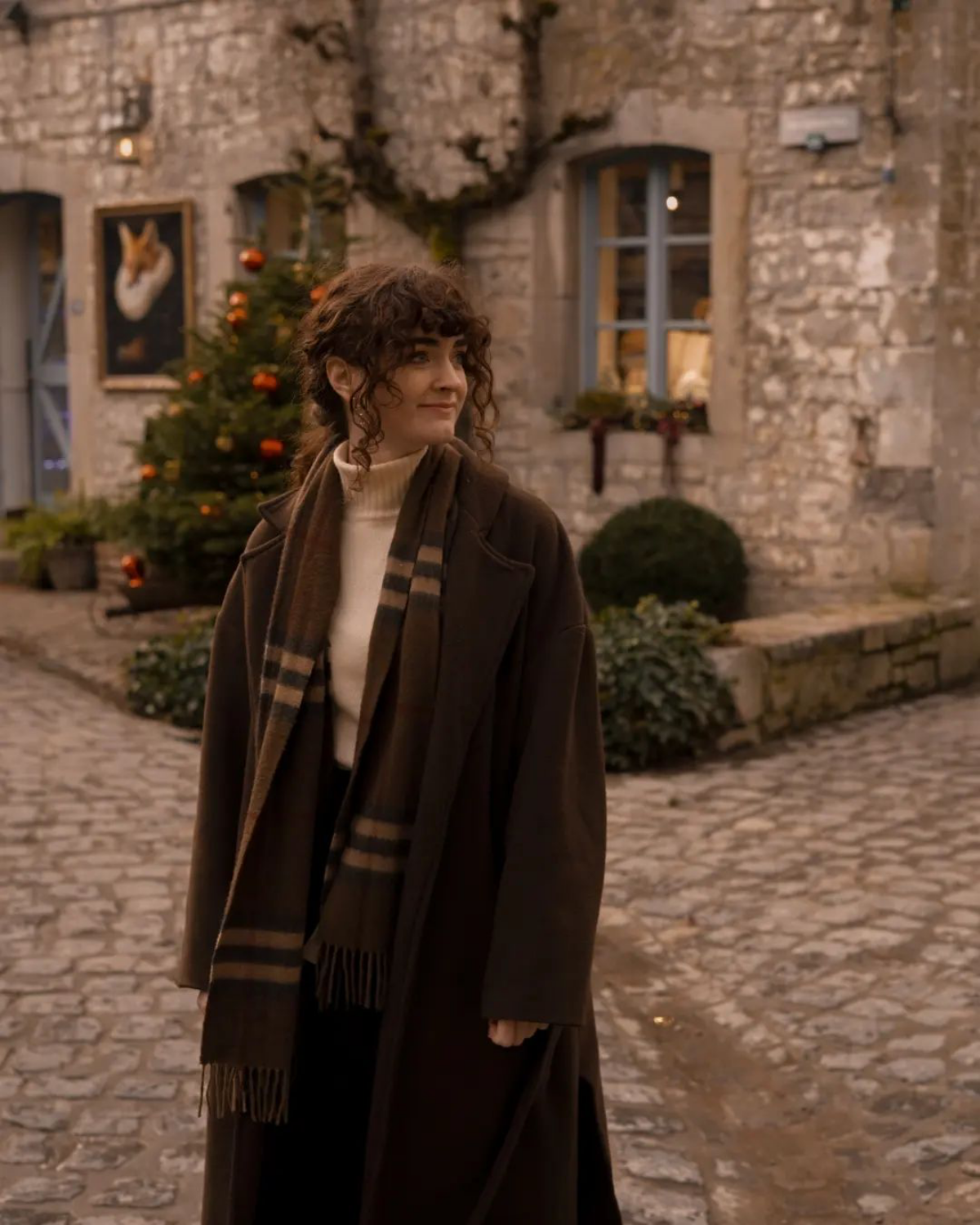
Choosing Your Flavor: British vs. American Style
This aesthetic isn’t one-size-fits-all. It has different roots, and you can lean into whichever one speaks to you more. Mixing and matching is also highly encouraged!
The British Academia look is the heavier, more formal, and more weathered of the two—born from a climate that demands it. The fabrics are robust and textured. Think of students walking across a damp, foggy campus. Key items here are heavy tweed sport coats, duffle coats with wooden toggles, chunky Aran or fisherman sweaters, and sturdy, thick-soled brogues or Derby shoes. The color palette often sticks to earthy greens, browns, and grays.
In contrast, the American Ivy tradition is a bit more relaxed, polished, and lighter. It pulls from the classic “prep” style. Here, you’ll see more navy blazers (sometimes with brass buttons), cotton chino trousers, penny loafers, and classic Oxford cloth button-down shirts. The layering is often simpler, maybe just a sweater and a blazer, creating cleaner lines than its more rugged British cousin.
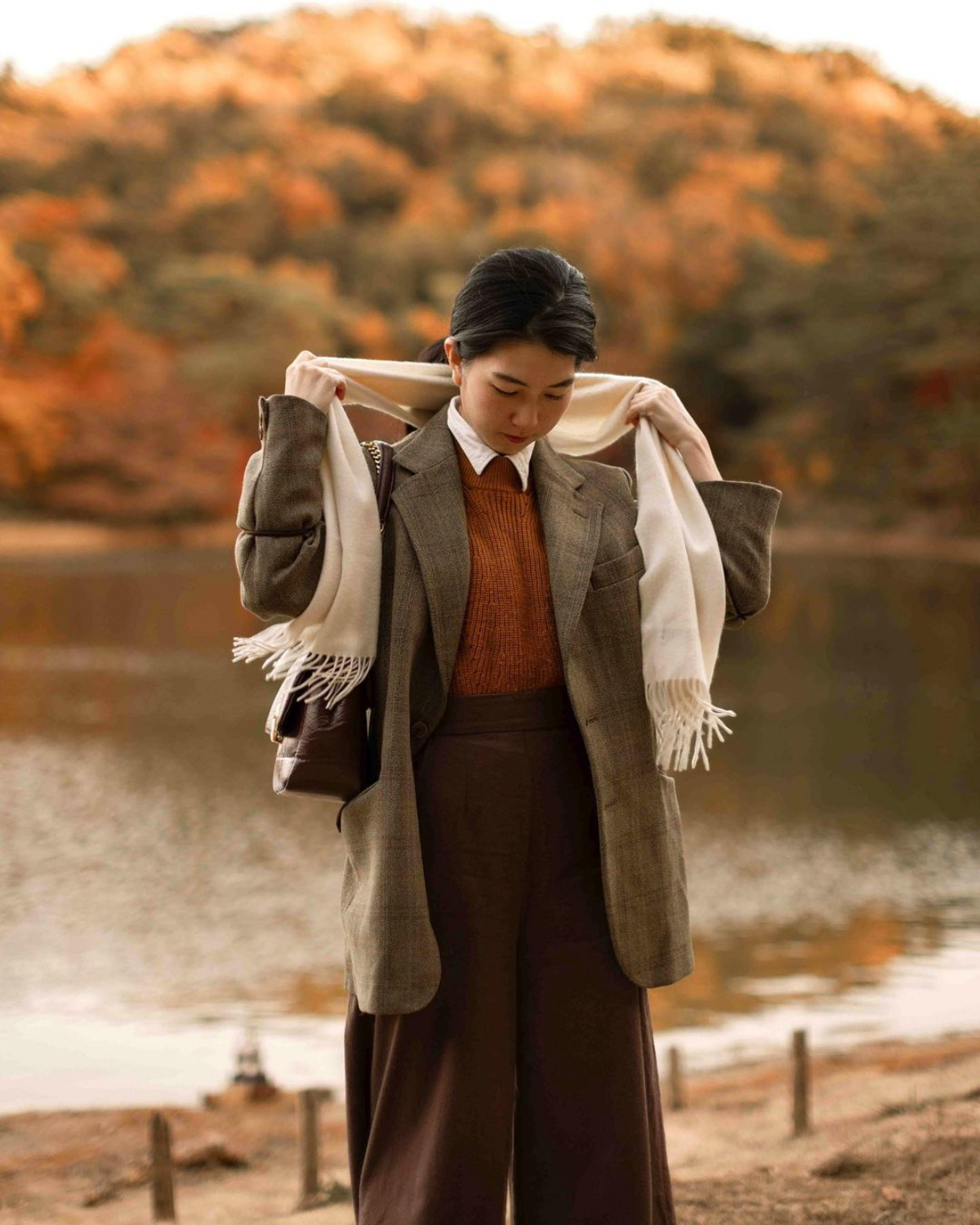
Your Starter Kit: The Foundational Five on a Budget
If you’re just starting and the budget is tight, focus on getting five core, high-quality pieces. With these, you can create dozens of outfits. Aim for these thrifting price points to know you’re getting a good deal:
- A Versatile Blazer: A single-breasted blazer in navy, charcoal gray, or a subtle brown tweed. (Thrift Goal: $20-$50)
- Dark Trousers: One pair of wool flannel or wide-wale corduroy trousers in gray, brown, or navy. (Thrift Goal: $15-$30)
- A Classic Oxford Shirt: The ultimate workhorse. Get one in white or light blue. (Thrift Goal: $8-$15)
- A Simple Wool Sweater: A crewneck in a versatile color like burgundy, forest green, or mustard. (Thrift Goal: $10-$25)
- Quality Leather Shoes: Look for second-hand dark brown or black leather loafers, Oxfords, or Derbies. Check for quality brands like Allen Edmonds or Florsheim; you can often find them for a steal and have them resoled by a cobbler. (Thrift Goal: $30-$60)
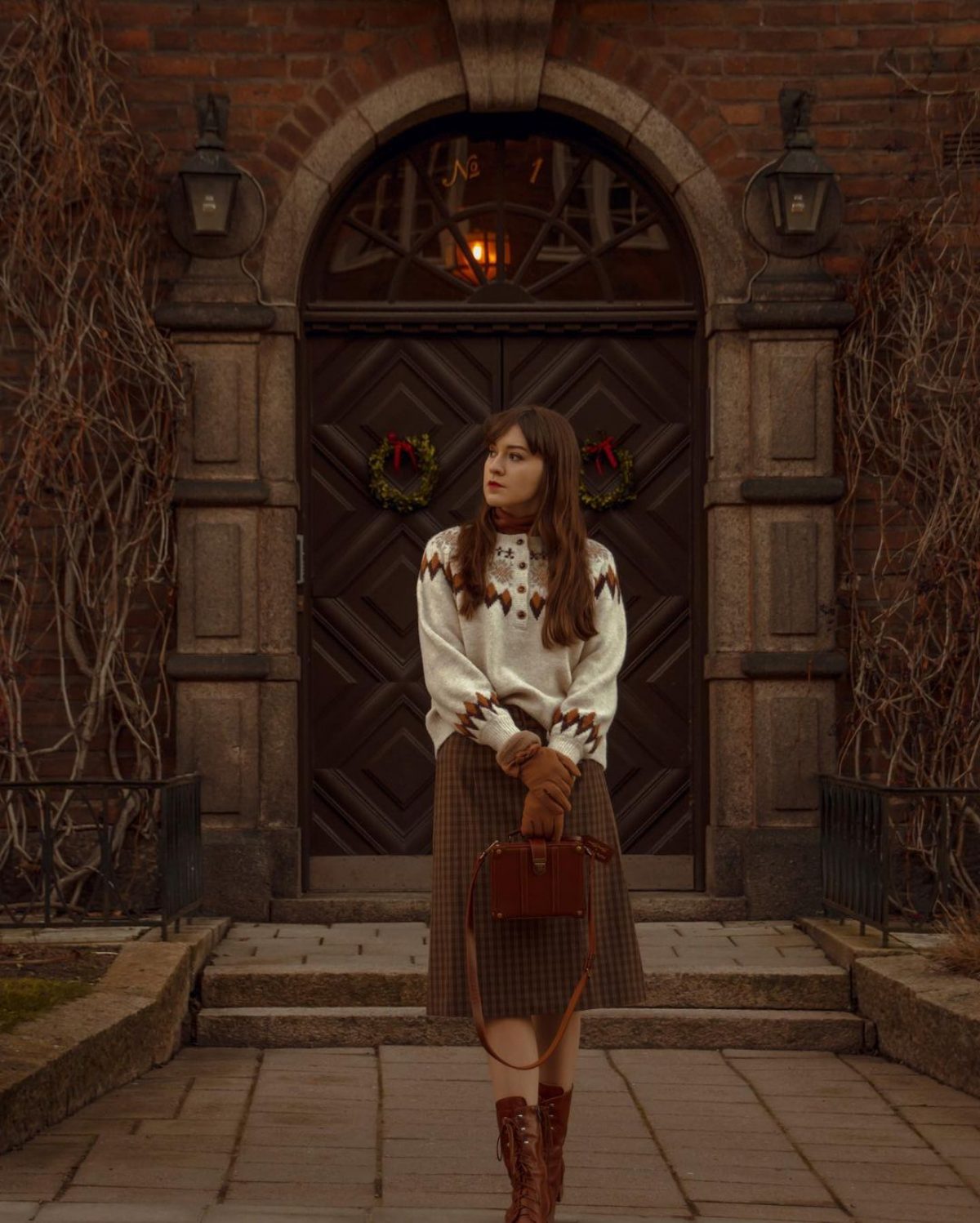
Caring for Your Clothes Like a Pro
Proper care is non-negotiable if you want your investment pieces to last. These are the same techniques we used in the theater to make costumes survive for years.
- Don’t Over-Wash Wool: Wool is naturally antimicrobial. You don’t need to wash sweaters after every wear. Just air them out. When you do wash them, do it by hand in cool water with a wool-specific soap, gently squeeze (never wring!) out the water, and lay it flat on a towel to dry. NEVER put wool in the dryer.
- Invest in Good Hangers: Use wide, shaped wooden hangers for blazers and coats. They support the shoulders and help the garment keep its shape. Wire hangers will ruin them over time.
- Steam, Don’t Iron: A handheld steamer is your best friend. It removes wrinkles without the harsh heat of an iron, which can crush the fabric’s texture.
- A Quick Safety Tip: When you bring a vintage wool piece home, it’s a good idea to kill any potential moth larvae. I learned this the hard way. The easiest method? Seal the garment in a plastic bag, pop it in your freezer for at least 72 hours, then let it thaw completely before you have it dry-cleaned or wash it.
Building this kind of wardrobe is a marathon, not a sprint. It took me years to curate a collection I truly love. Be patient. The real goal isn’t to perfectly copy a photo you saw online; it’s to build a personal, practical, and meaningful collection of clothes that makes you feel great for years to come. It’s a slow and deeply satisfying journey.
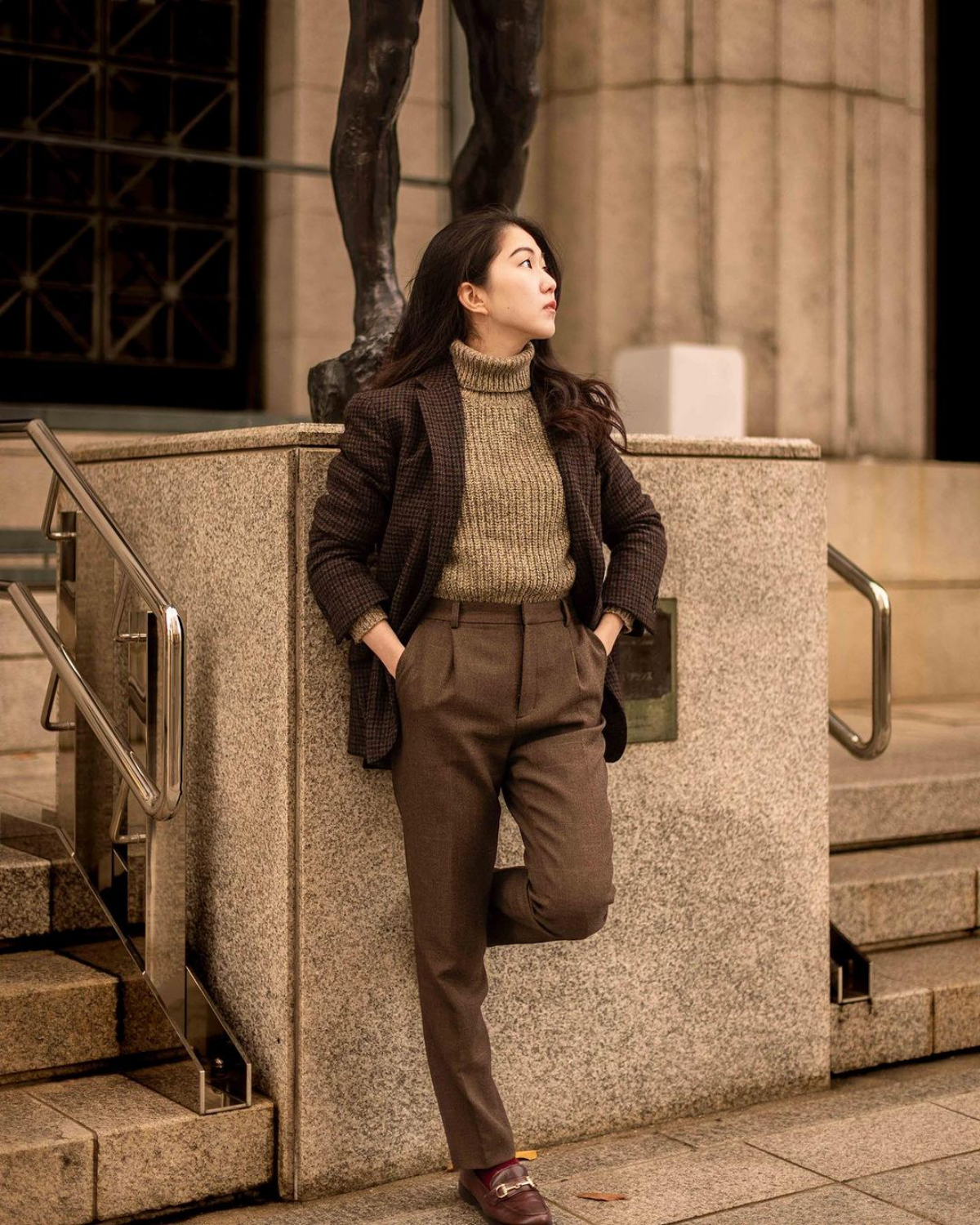
Galerie d’inspiration
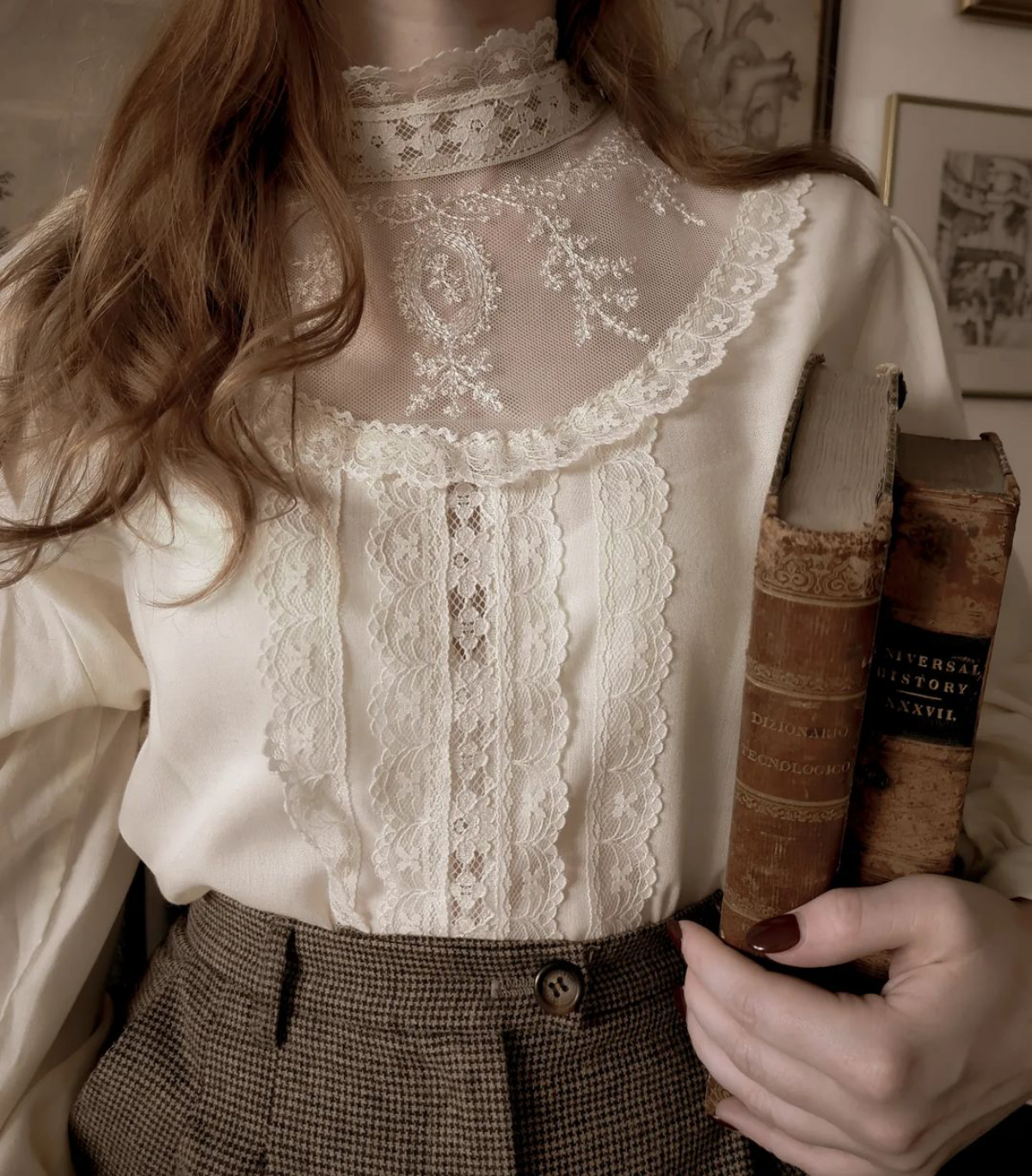
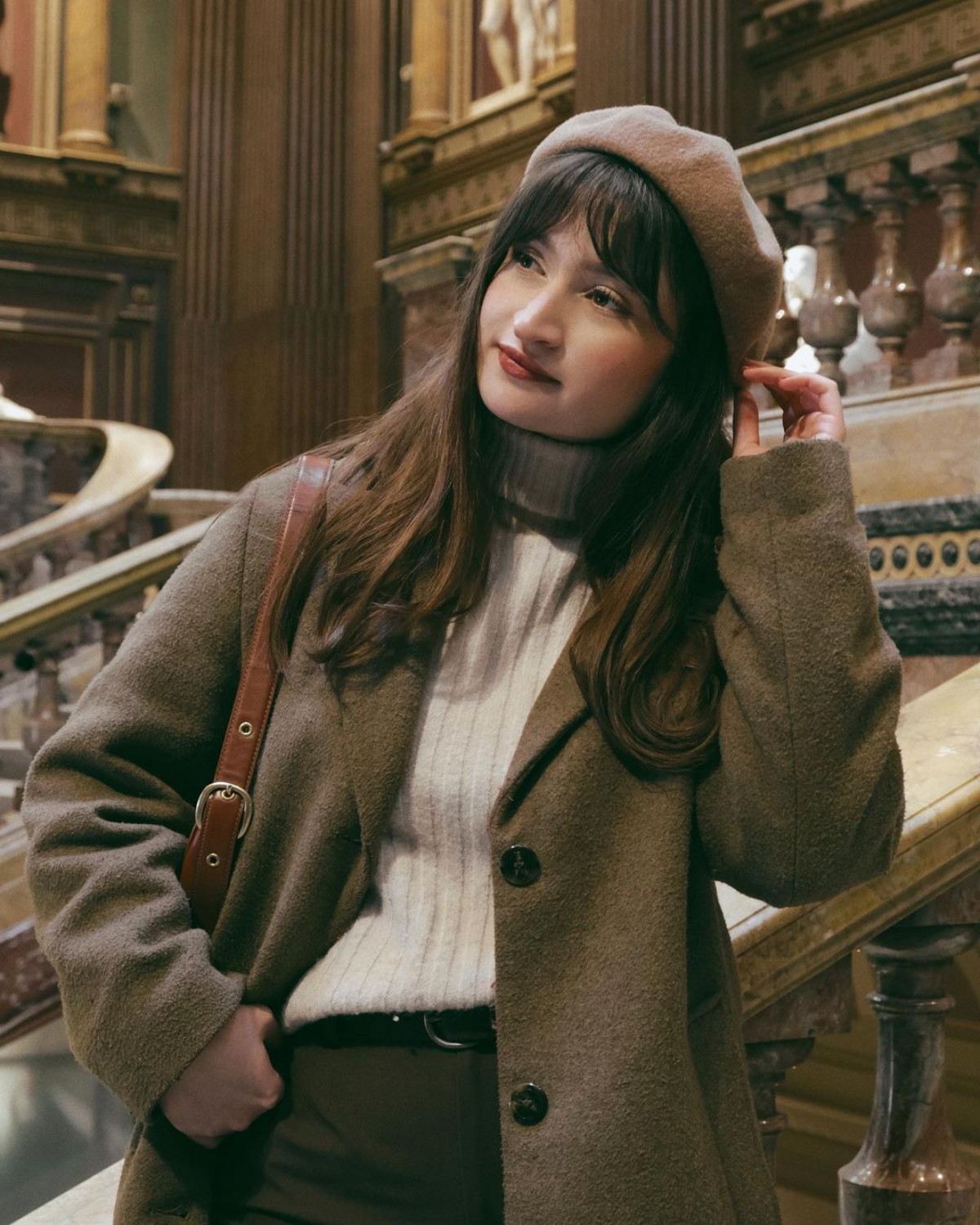
The Loafer: Think G.H. Bass Weejuns or the Dr. Martens Adrian Tassel Loafer. It’s the preppy, intellectual choice—easy to slip on, perfect with tailored trousers or pleated skirts. Its lower profile offers a sharp, polished look that works seamlessly from the library to a lecture hall.
The Lace-up Boot: Consider a classic Derby or Oxford boot in dark brown or black leather. This option provides more rugged, all-weather support. It grounds an outfit, adding a touch of gravitas and suggesting a readiness for long, thoughtful walks through cobblestone streets.
Ultimately, the choice depends on your daily rhythm; the loafer is for scholarly ease, the boot for poetic wandering.
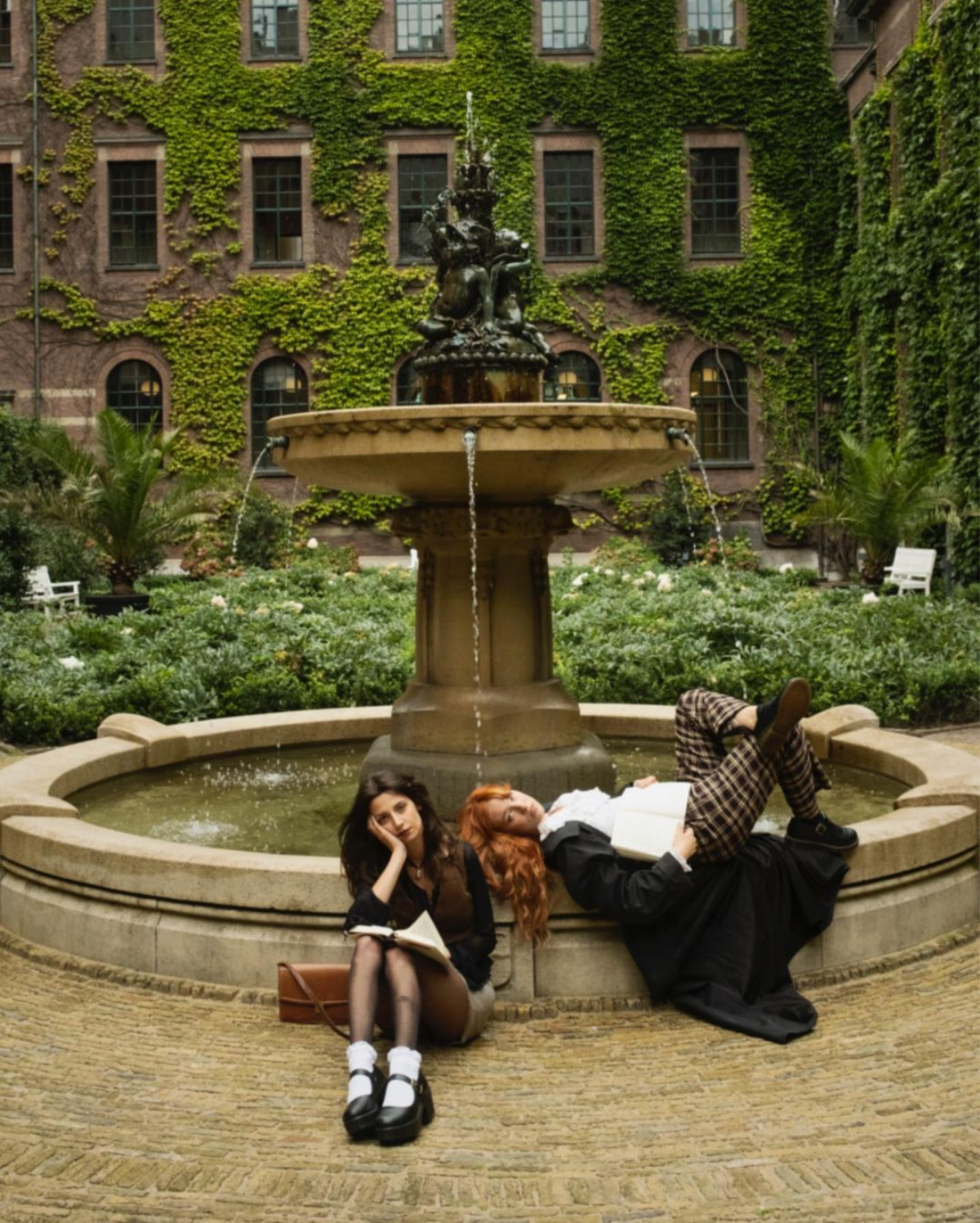
More than 90% of Harris Tweed is still exported, a testament to its enduring global appeal as a benchmark for quality woolen fabric.
When you choose a genuine Harris Tweed blazer, you’re not just buying a piece of clothing; you’re investing in a specific heritage. The Orb Mark certification guarantees that it was hand-woven by islanders in the Outer Hebrides of Scotland. This connection to place and craft is the very soul of the Dark Academia ethos—valuing authenticity and stories over mass production.
How do you achieve that perfectly ‘lived-in’ look without waiting a decade?
The secret is focusing on how you care for your clothes, not damaging them. For knitwear, avoid the dryer at all costs; lay your wool sweaters flat to dry to maintain their shape. For leather goods, like a satchel or shoes, don’t be afraid of minor scuffs. Instead of polishing them away immediately, allow them to settle. Once a season, clean and condition them with a product like Saphir or Fiebing’s to nourish the leather. This encourages the development of a rich, natural patina that tells a story, rather than creating artificial distress.

